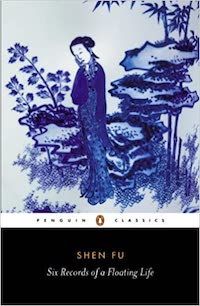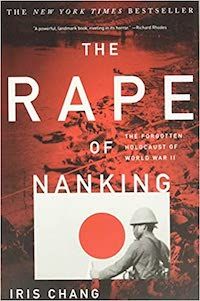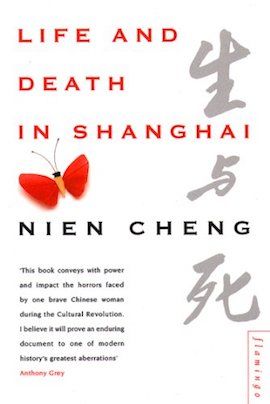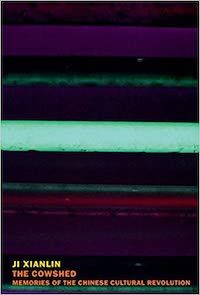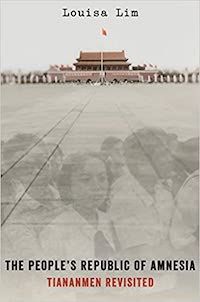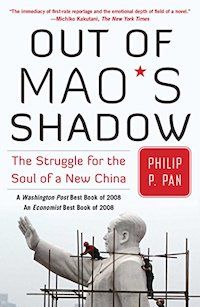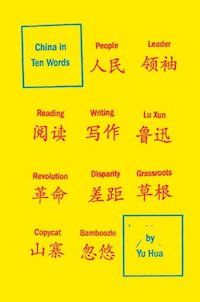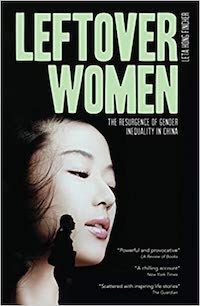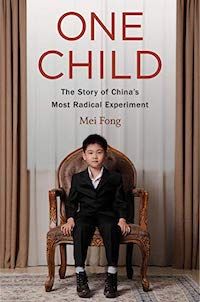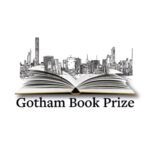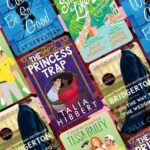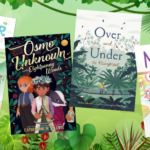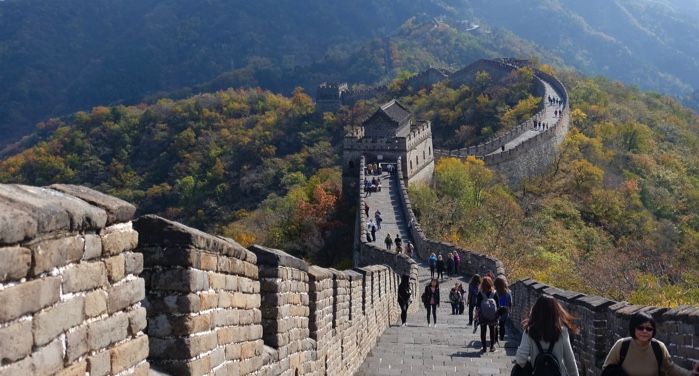
21 Chinese History Books by #Ownvoices Authors
The first time I traveled to China and marveled over the terra cotta warriors in Xian, walked The Bund and French Concession in Shanghai, and gazed down on the Forbidden City in Beijing, I finally understood how rich and complex China’s history truly is. So it’s not surprising that there are so many books about China and its history. But if you’ve ever searched for Chinese history books written in English by #OwnVoices authors, then you know those titles are more difficult to find.
By now, most of us understand the value of reading and supporting #OwnVoices authors across genres and topics, but when it comes to exploring the history of a specific culture, it’s particularly important to consider the perspectives of writers with relevant personal connections and lived experiences. So, if you’re looking to dig into the events, legends, and personal stories that helped shape the history of China — whether or not you’ve been there — check out these nonfiction Chinese history books by #OwnVoices authors.
Chinese History Books for Adults: Pre-20th Century
Every Step a Lotus: Shoes for Bound Feet by Dorothy Ko
Readers who perceive the ancient practice of footbinding as denigrating may reconsider their point of view after reading this book. Dorothy Ko explores the origins of, purpose for, and mechanics behind shoemaking for footbinding from the perspectives of the women who engaged in the ritual as a practical way to address social and economic expectations. Detailed images of shoes used in the practice across multiple regions of China enhance Ko’s narrative.
Six Records of a Floating Life by Shen Fu, Edited and Translated by Leonard Pratt, Translated by Chiang Su-Hui
Translated from its original text written in the 1800s, this is the memoir of Shen Fu, a civil servant and art dealer. Through his observations on his marriage, his work, and his travels around China, readers get a peek at what life was like in the Ch’ing Dynasty.
Chinese History Books for Adults: World War II and Pre-Cultural Revolution
The Rape Of Nanking: The Forgotten Holocaust Of World War II by Iris Chang
When the Imperial Japanese army marched into the capital of China in 1937, more than 300,000 Chinese soldiers and civilians were raped, tortured, and murdered. Drawing on learnings from rare documents and interviews with survivors, author Iris Chang — whose grandparents narrowly escaped the attack — sheds light on the massacre from the viewpoints of the Japanese soldiers, the Chinese citizens, and westerners who created safe spaces for Chinese people.
Shanghai: The Rise and Fall of a Decadent City by Stella Dong
Before Mao created the People’s Republic of China in 1949, Shanghai was a city that was larger than life. A port for foreign trade, the city not only became home to citizens from all over the world, but also for opium, underworld criminal activity, extreme wealth, and abject poverty. Author and journalist Stella Dong brings the city and some of its most colorful characters to life in a nonfiction work that reads like a novel.
Chinese History Books for Adults: Cultural Revolution
Life and Death in Shanghai by Nien Cheng
During the Cultural Revolution, Nien Cheng’s life as an employee of Shell in Shanghai was interrupted when she was arrested and imprisoned by the Red Guard. Cheng, fluent in English and an anglophile, was accused of being a British spy. Cheng details her years in solitary confinement, during which time she held steadfast in her refusal to confess and rejected the terms offered by her interrogators. Although she never gave in, when she was finally released, she discovered tragic news about her daughter.
Blood Red Sunset: A Memoir of the Chinese Cultural Revolution by Ma Bo, Translated by Howard Goldblatt
As an adolescent Red Guard member, author Ma Bo gained and embraced his reputation as a brutal abuser of herd owners and nomads in Inner Mongolia where he and his fellow guards were sent to spread the Cultural Revolution. But after casually criticizing the Party Leader, he was denounced by the people he thought were his friends. In this passionate and powerful memoir, which was initially banned in his native land, Bo describes his journey from idealism to betrayal to disillusionment.
The Cowshed: Memories of the Chinese Cultural Revolution by Ji Xianlin, Translated by Chenxin Jiang, and with an Introduction by Zha Jianying
Ji Xianlin, professor of Eastern languages at Peking University, watched as his campus became engulfed in the turbulence of the Cultural Revolution. After being persecuted by professors and students in his own department, his home was invaded and his possessions destroyed. In 1968, he was imprisoned on campus and forced to build a cowshed — a makeshift prison for himself and his fellow colleagues. In this memoir, Ji Xianlin recalls his harrowing experiences and spiral into disillusionment during his time as a prisoner who was labeled as a class enemy.
Six Chapters From My Life “Downunder” by Yang Jiang, Translated by Howard Goldblatt, and with a Preface by Jonathan Spence
Like many scholars who’d studied abroad, author Yang Jiang and her husband were sent to a barren countryside during the Cultural Revolution to be forcibly reeducated through labor. She and her husband were split up and she was tasked with digging wells, standing watch over vegetable gardens, and other mundane tasks. Through subtle allegories, observations of irony, and wry reflections on daily life at her “school,” Jiang delivers a powerful indictment of Mao’s totalitarian rule and its effects on her family and others like her.
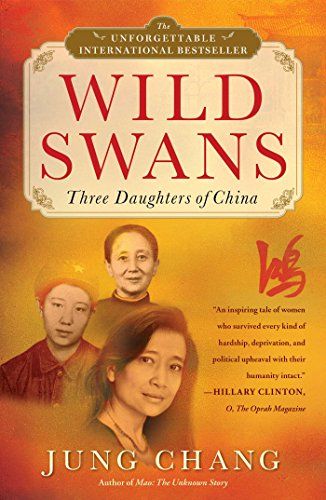
Wild Swans: Three Daughters of China by Jung Chang
In Wild Swans, the lives of three generations of women — all of them profoundly affected by Mao’s totalitarian rule — unfold in 20th century China. Jung Chang, the author, who was briefly a teenage member of the Red Guard, describes her experiences alongside those of her grandmother, who was concubine to a police chief, and her mother, who was a high Communist official for Mao. Each woman finds her own strength in the face of extreme violence and heartbreak during one of China’s most turbulent eras.
Chinese History Books for Adults: Post-Cultural Revolution
The People’s Republic of Amnesia: Tiananmen Revisited by Louisa Lim
Journalist Louisa Lim weaves together the stories of eight people whose lives have been permanently impacted by the tragic events of Tiananmen, including a student who was protesting, a soldier who engaged in suppression, and a government official who was involved in ordering tanks into the square. Lim is determined to help prevent the erasure of the lasting effects and emotional wounds left on Chinese society by the events of June 4, 1989.
The Good Women of China: Hidden Voices by Xinran
In the late 1980s, author Xinran was a journalist in Beijing and host of a call-in radio show. It became so popular that her mailbox and answering machine were soon overflowing with candid stories and questions from women all over the country who finally felt free to share their thoughts on sexuality, abuse, suicide, and more. Although she was able to air some of the letters on the air, many of the stories were censored by government officials. After the author moved to London in 1997, she published this book and included some of the censored stories in an effort to shed a clear light on the experiences of women in China in the wake of the Cultural Revolution.
Out of Mao’s Shadow: The Struggle for the Soul of a New China by Philip P. Pan
As an award-winning journalist for The Washington Post, Phillip P. Pan used his fluent Chinese to slip past police and go where few Western journalists have ever gone before. He immersed himself in the lives and work of ordinary people who were reckoning with the aftermath of the Cultural Revolution. After spending time everywhere from the posh offices of tycoons to a tabloid newsroom to aging industrial factories to small-town courtrooms, he wrote about what he observed, revealing a range of Chinese citizens’ sentiments from a determination to fight for change to jaded disillusionment to pragmatic resilience.
China in Ten Words by Yu Hua, Translated by Allan H. Barr
In his first nonfiction work, Yu Hua reflects on the last several decades of China’s economic and social transformation in the context of ten common phrases in Chinese vernacular: people, leader, reading, writing, Lu Xun (an influential Chinese writer), disparity, revolution, grassroots, copycat, and bamboozle. Yu Hua’s candid writing doesn’t shy away from presenting unexpected takes on what he believes are misunderstood ideas about his country.
Leftover Women: The Resurgence of Gender Inequality in China by Leta Hong Fincher
Through meticulous research and extensive interviews, author and journalist Leta Hong Fincher exposes the reality of gender relations in post-socialist China. Fincher describes how the Communist Party’s early attempts to improve equality for women have become eroded over time, resulting in structural discrimination against women that runs contrary to the image China’s media presents. Fincher explores not only how this affects women, but also how it’s damaged China’s economic and political development in the modern era.
One Child: The Story of China’s Most Radical Experiment by Mei Fong
Author Mei Fong takes a deep dive into the one-child policy that existed in China for 36 years. Before the policy was officially lifted, Fong spent eight years researching its effects on Chinese families, including the experiences of only children who are supporting parents and grandparents alone, second children who are denied documentation, and the large and growing number of ineligible bachelors. The findings in this book provide a glimpse into what might be just the beginnings of a tumultuous aftermath of the one-child policy.
Chinese History Books for Kids and Teens
The Great Race: Story of the Chinese Zodiac by Ling and Eric Lee and Rachel Foo
The legend behind how the Chinese Zodiac came to be in ancient China is brought to life in this children’s book through large, vivid illustrations. When the Jade Emperor invited all the animals in the kingdom to participate in a race, the first 12 animals who crossed the river became part of the Chinese Zodiac we know now. Follow the story in simplified Chinese, Pinyin, and English text.
Mystery of the Giant Masks of Sanxingdui by Icy Smith and Gayle Garner Roski
This children’s book tells the story of how Sanxingdui became a lost civilization more than 3,000 years ago. Sanxingdui was once known far and wide for its bronze-cast masks. When the citizens of this ancient city hear rumors of a foreign invasion, the chief’s daughter, Min, and her brother must lead the villagers to safety — but where will they go and how will they preserve their bronze treasures?
China: Land of Dragons and Emperors by Adeline Yen Mah
In this book, written with teenagers in mind, author Adeline Yen Mah takes readers through the rich and complex history of China, from ancient dynasties to modern day. Mah not only calls out everyday items such as paper, matches, and silk that were first made in China, but also explains how lucky numbers, festivals, and beliefs about colors came about and how they’ve shaped a vibrant Chinese culture that still exists today.
Foundations of Chinese Civilization: The Yellow Emperor to the Han Dynasty (2697 BCE–220 CE) by Jing Liu
Readers aged 10 years and older will enjoy this telling of Chinese history in comic form. Author Jing Liu tells the story of China and its people, covering a range of topics, from Confucianism and Daoism to the story of the Silk Road to the life of famous emperors to the country’s unification and more.
China’s Son: Growing Up in the Cultural Revolution by Da Chen
Adapted for young readers from his adult memoir, Da Chen shares his story of living in Communist China as a schoolboy. Before the Cultural Revolution, Chen and his family had come from a legacy of privilege. So, after Chairman Mao came into power, Chen was told by his teachers that his academic achievements meant nothing and that because of his “family’s crimes,” he’d never be more than a poor farmer. Da’s response was to drop out of school.
Little White Duck: A Childhood in China by Na Liu and Andrés Vera Martínez
This graphic memoir, written especially for middle grade readers, offers a glimpse of what it was like to live in Wuhan, China, during the 1970s and 1980s. Unlike many narratives about the Mao era, Liu shares the many benefits her family received during that time, including free surgeries that cured her mom’s polio and the scholarship that brought her dad out of poverty. So when Mao dies, Liu and her sister need time to understand and process what it will mean to live in a world so different from the one their parents knew.
None of us can travel across time and space to experience many of the defining moments in Chinese history firsthand. But any of us can do the next best thing: we can pick up these Chinese history books and lose ourselves in the stories and the unique perspectives of these #OwnVoices authors. Who’s ready to explore with me?




